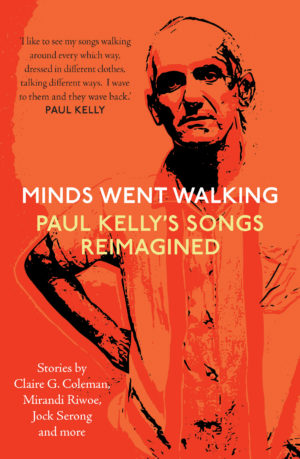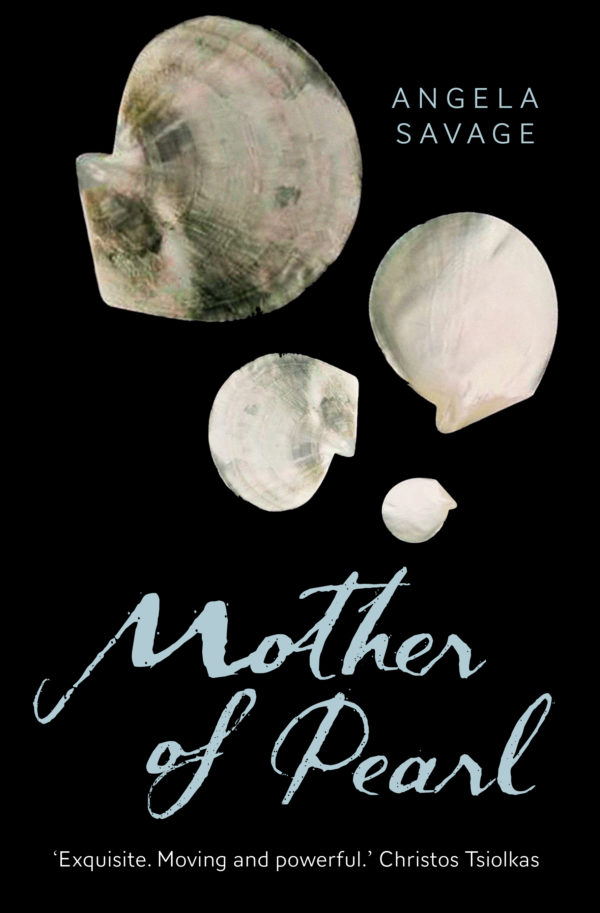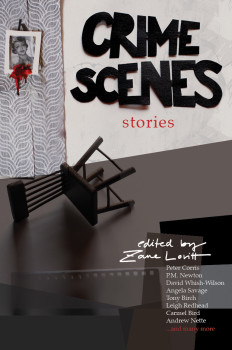Over the New Year break, I read Anne Michaels’ remarkable novel, The Winter Vault. Michaels is a poet turned novelist and it shows in her lyrical prose. The Winter Vault is essentially a love story about engineer Avery and his horticulturalist wife Jean. But as the action moves from Egypt to Canada, Scotland to Poland, Michaels weaves meditations on history and culture into the narrative with a dazzling boldness. I kept wanting to mark up paragraphs in pencil, read passages out loud, reflect on how I felt about the issues raised by the characters in the story.
The following paragraph is one example:
Avery spoke of the despair of space that the built world had created; waste space too narrow for anything but litter; dark walkways from carparks to the street; the endless, dead space of underground garages; the corridors between skyscrapers; the space surrounding industrial rubbish bins and ventilator shafts . . . the space we have imprisoned between what we have built, like seeds of futility, small pockets on the earth where no one is meant to be alive, a pause, an emptiness . . .
‘And that’s why love street art,’ I said to myself as I marked up this passage in the novel.
It was a moment of revelation. I love street art — and I include graffiti in my definition — because it transforms ‘waste space’ into something of value, breathing life into those small pockets where no one is meant to be alive, filling that emptiness with something to ponder, admire, take umbrage at, get excited about.
The authorities celebrate my hometown, Melbourne, as ‘one of the world’s great street art capitals for its unique expressions of art on approved outdoor locations’, though they hasten to distinguish between stencils, paste-ups and murals as legal street art, and illegal graffiti and tagging.
But I don’t mind the mindless graffiti — everybody’s got to start somewhere — and many tags are astonishing, both aesthetically and logistically.
Brunswick where I live in Melbourne’s inner north is an embarrassment of riches when it comes to street art. My theory is that the amount of creative energy in this suburb simply cannot be contained and spills out on to the streets and into public spaces in an ever-changing landscape of artwork.
Local favourites include large, stunning works by aerosol artists Adnate and the AWOL Crew, and Baby Guerilla‘s whimsical paste-ups that remind me of flying dreams. But I also love the little works by anonymous artists: the sculpted heads on telegraph poles; the origami cranes found floating from the railing outside the railway station one morning; the spinning wheels; the little green monster on a back gate; the quirky stencils that transform walls into palimpsests.
The pause created by these works is not the emptiness that causes Avery in The Winter’s Vault to despair, but a moment to savour. Take the above photo: you see the bins, but you notice the bird, and there’s something about its proximity to the bins that makes it all the more beautiful. It looks poised to fly from the side of a factory turned artists’ space, the sort of building likely to be razed for apartments before too long.
That’s the other precious thing about street art: its transience. Birds like this face constant threat of extinction.
Below is a slideshow of street art images (my first in a post), all taken within a couple of kilometres of where I live over the past couple of years. Some no longer exist, brought down with the walls of the buildings on which they were painted. Others are no longer visible, painted, pasted or stencilled over. As a photographer, I’m a rank amateur. For truly stunning images, I recommend Suzanne Phoenix‘s work, especially her Melbourne Street Art Diary 2014 (order here).
- Adnate & the AWOL Crew at work
- Adnate and the AWOL Crew, detail
- Baby Guerrilla, Albert St
- Paste-up, Ilhan Lane
- Bringing Up Baby stencil, Union St
- Loves me, loves me not, Upfield Bike Path
- Cranes by Anstey station
- Heads near Brunswick Station
- Dr Seuss house, Henry St
- Dr Seuss House detail
- Doorway, Albert St – before
- Adnate mural, Victoria Street
- Bluestone laneways of wonder
- Corpse bride, Anstey Station
- Baby Guerrilla, Victoria St
- I Heart MLBRN, Upfield train line
- AWOL Crew
- Tom Cat near Jewel Station
- Artists’ space, Albert St
- Artists’ space detail
- Small green man





























Angela – Thanks for sharing that art with us. It’s beautiful. There is a big difference between malicious graffiti and real street art…
LikeLike
Thanks for your comment, Margot. I know I should agree with you about the difference between ‘malicious graffiti’ and ‘real street art’, but I waver. I visited the Pompeii exhibition here in Melbourne a couple of years ago, and one of the things I remember most clearly was the graffiti found on the site. There’s no mistaking these examples for street art (“Atimetus got me pregnant”, “Satura was here on September 3rd”), but malicious or not, they preserve the personalities of those who perished in the volcanic eruption all those years ago and provide insight into how ordinary people lived. My personal favourite? “If anyone does not believe in Venus, they should gaze at my girl friend” (atrium of the House of Pinarius).
LikeLike
OK, I’ll grant you that last one, Angela – That’s priceless!
LikeLike
There is some fantastic street art around my Melbourne suburb too. I did a walking tour of art galleries of Melbourne CBD a couple of years ago as part of a travel story for a NZ magazine, and street art was included, which was eye-opening. I agree with Margot about the difference between malicious graffiti and real street art. The former, unfortunately, ruins many pleasant spaces in my neighborhood, such as fences and walls of private homes, with ugly black tagging. The latter definitely adds character to the area and transforms derelict buildings and ugly spaces (your rubbish bins picture is a prime example). The owner of a bicycle shop on a street corner near me has a large brick wall on one side of his shop. For years, it would be relentlessly tagged and he would be seen outside, cleaning off the mess. Then he did something clever: he employed a street artist to spray paint a fantastic scene on the wall, depicting historical Australian bike races. It is wonderful to look at, and since then, has not been tagged.
Good pictures, Angela!
LikeLike
Caron, further to my response to Margot above, I have to admit that the only time graffiti irks me is when it defaces street art! Even so, that ‘ugly black tagging’ transforms ‘waste space’ into something to take umbrage at and/or get angry/excited about — and that’s the point I was trying to make in this post. It’s not just about aesthetics; it’s about energy. Taggers like Lush intend to provoke with their work — which incidentally is included in the National Gallery of Victoria’s Melbourne Now exhibition (see here for details).
LikeLike
Yes, I like the way you think about the tagging—it is thought-provoking. You’ve reminded me, I MUST go to that exhibition.
I’m currently doing an art course by correspondence, and recently for an assignment, I did a sketch of the laneway opposite our townhouse, complete with its tagging. In his recorded feedback, the tutor said it was clear to him that I really liked the tagging and would like to do that myself, but urged me not to break the law and to consider making a model of the wall and tagging that instead, as a sort-of installation art piece!
LikeLike
Hah! That’s fantastic feedback, Caron. I do urge you to see Melbourne Now. As well as Lush’s work, you might also enjoy the pieces by Stieg Persson.
LikeLike
I love street art. It transforms sterile urban environments, brings beauty and world views. It is a way for people who live in communities to express themselves artistically.
I was never for prosecutions of those who use city edifices or trains as their canvases.
Not all artists can afford studios, Most people don’t have exhibits at galleries or in museums.
So I say Go to it, street artists. Create away.
LikeLiked by 1 person
All good points, Kathy. Reading your comments, I’m struck by the thought that street art can be the equivalent of self-publishing…
LikeLiked by 1 person
I do a little public stuff. I looked up the penalties for being caught with cans/pens, and for painting etc etc it’s pretty stark reading. I stay in NZ. I don’t like the idea of being imprisoned for contributing beauty to our environment. It has made me reconsider and focus solely on legal work. During lockdown this may be very hard to find. It is so fun to get out there and express myself and it is almost a personal need for me as I have so much creativity. It would be nice if the powers that be considered people like me as valuable rather than critters to be squashed! It’s not so cool that there’s no outlet for people to do work without threat of prosecution to a large degree. I’m not one to flaunt rules and upset other people without good reason. Just have to be thoughtful and considered in my actions and expression of my impulses to create.
LikeLike
Graffiti that are aesthetic I can appreciate, but what if they are malicious, homophobic, sexist and racist? What if they are pure vandalism? What if they deface a historical artifact or monument? What about graffiti like the kind one often finds on public toilet walls and doors (phallic symbols next to a phone number) ?
Apart from aesthetic value, I like street art that raises awareness of socio-economic and political issues, makes me look at things from a different perspective or provides insights to a place I am visiting.
In Johor Baru, Malaysia, Lithuanian artist Ernest Zacharevic drew on the wall a girl carrying a Chanel handbag. Around the corner, he painted a man with a knife lying in wait for her. Outraged by the insinuation the southern city is full of muggers, the Johor Baru City Council immediately painted over this mural. ( http://www.bbc.co.uk/news/magazine-24924283 ). Now, that kind of whitewashing is definitely not street art !
To me, street art shouldn’t be destructive; it isn’t about destroying/damaging property or harming people.
LikeLike
Khim, you make an interesting point here. I share your dislike of graffiti that is malicious, homophobic, racist and sexist. But once we start talking about what should and shouldn’t be graffitied, we bump up against the perennial problem that occurs whenever we start talking about restricting freedom of speech: who gets to call the shots? I share your values, but what you and I might want to see banned will rarely square with what the powers that be want to ban — the Johor Baru City Council’s treatment of the Ernest Zacharevic piece being a case in point. Do you see what I mean?
I should add that some of the cleverest graffiti I’ve seen actually challenges racist, sexist and homophobic attitudes/scribblings.
LikeLiked by 1 person
Yes! Agree 100%. Also. graffiti has been used here to arrest and harass young people.
LikeLike
Angela, I believe that when we exercise our right to freedom of speech, we should also demonstrate a sense of responsibility – with sincerity and elegance….
LikeLike
Couldn’t agree more, Khim. And I eagerly await the advent of leadership that advocates exactly that.
LikeLike
Pingback: Art versus graffiti: Who calls the shots? | Angela Savage
Hi Angela,
thank you for the ‘like’ on ‘The Scarlet Stiletto’. I wrote it for a friend who won the ‘investigative’ award at this years Scarlet Stiletto Awards……. it seemed like a bit of fun and I was very pleased for her, and as the owner of the ‘bright red shoe’ from ’11, I guess you would know how that feels.
Terry
P.S. her name is Sandi Wallace
LikeLike